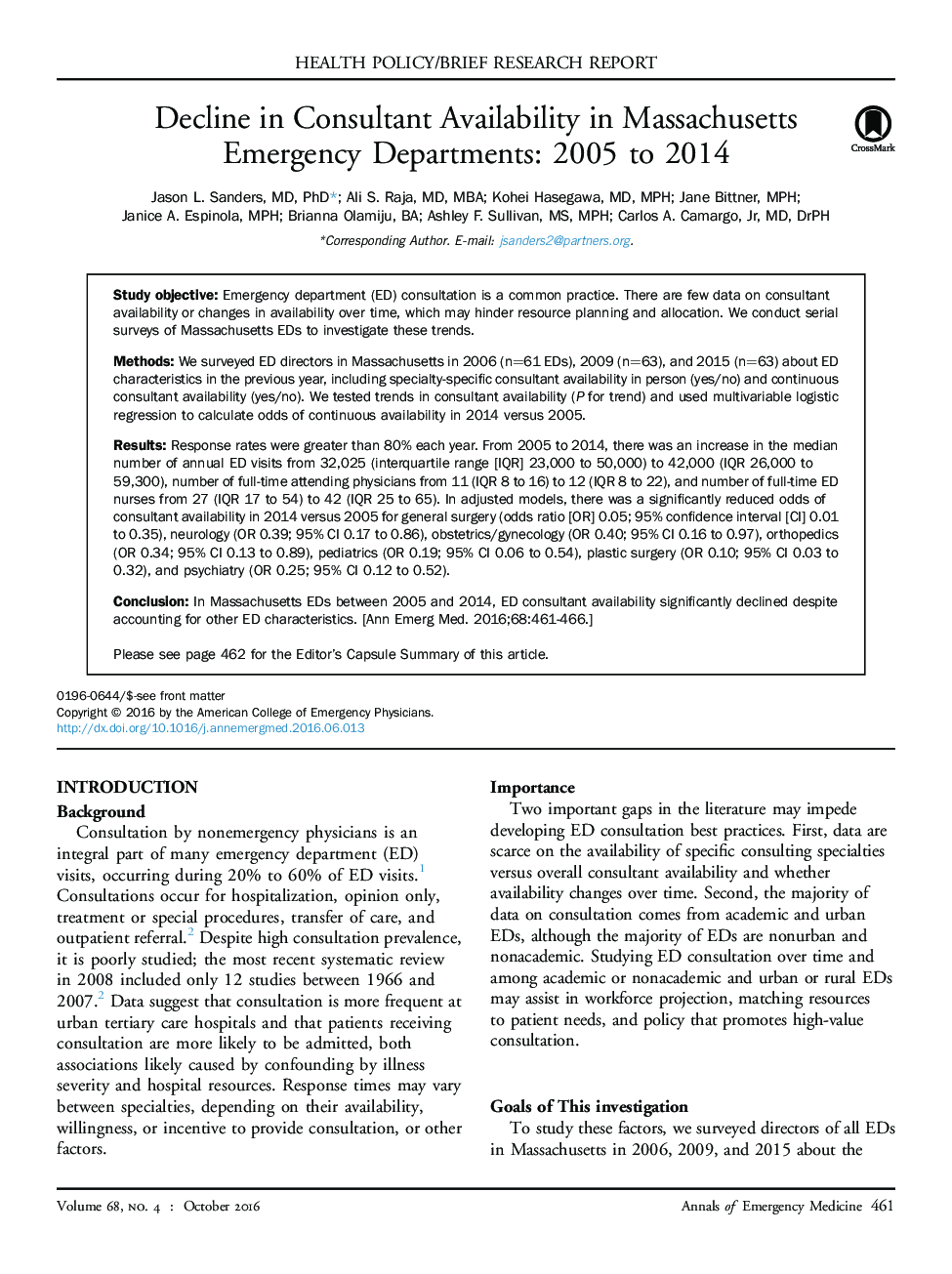| Article ID | Journal | Published Year | Pages | File Type |
|---|---|---|---|---|
| 3228147 | Annals of Emergency Medicine | 2016 | 6 Pages |
Study objectiveEmergency department (ED) consultation is a common practice. There are few data on consultant availability or changes in availability over time, which may hinder resource planning and allocation. We conduct serial surveys of Massachusetts EDs to investigate these trends.MethodsWe surveyed ED directors in Massachusetts in 2006 (n=61 EDs), 2009 (n=63), and 2015 (n=63) about ED characteristics in the previous year, including specialty-specific consultant availability in person (yes/no) and continuous consultant availability (yes/no). We tested trends in consultant availability (P for trend) and used multivariable logistic regression to calculate odds of continuous availability in 2014 versus 2005.ResultsResponse rates were greater than 80% each year. From 2005 to 2014, there was an increase in the median number of annual ED visits from 32,025 (interquartile range [IQR] 23,000 to 50,000) to 42,000 (IQR 26,000 to 59,300), number of full-time attending physicians from 11 (IQR 8 to 16) to 12 (IQR 8 to 22), and number of full-time ED nurses from 27 (IQR 17 to 54) to 42 (IQR 25 to 65). In adjusted models, there was a significantly reduced odds of consultant availability in 2014 versus 2005 for general surgery (odds ratio [OR] 0.05; 95% confidence interval [CI] 0.01 to 0.35), neurology (OR 0.39; 95% CI 0.17 to 0.86), obstetrics/gynecology (OR 0.40; 95% CI 0.16 to 0.97), orthopedics (OR 0.34; 95% CI 0.13 to 0.89), pediatrics (OR 0.19; 95% CI 0.06 to 0.54), plastic surgery (OR 0.10; 95% CI 0.03 to 0.32), and psychiatry (OR 0.25; 95% CI 0.12 to 0.52).ConclusionIn Massachusetts EDs between 2005 and 2014, ED consultant availability significantly declined despite accounting for other ED characteristics.
